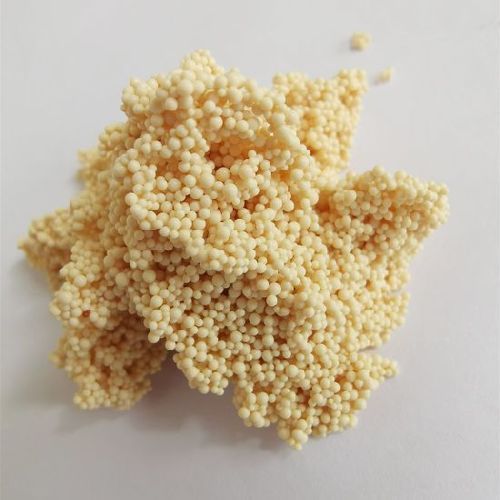Cation Exchange Resins For Industrial Chromatography

Product Details:
- Grade Food Grade
- Purity(%) 100
- Application PURIFICATION AND SEPERATION
1000.00 - 3000.00 INR/Liter
X
Cation Exchange Resins For Industrial Chromatography Price And Quantity
- 25 KG Liter
- 1000.00 - 3000.00 INR/Liter
Cation Exchange Resins For Industrial Chromatography Product Specifications
- PURIFICATION AND SEPERATION
- 100
- Food Grade
Cation Exchange Resins For Industrial Chromatography Trade Information
- MUMBAI
- Delivery Point (DP) Cash Against Delivery (CAD) Cash on Delivery (COD) Telegraphic Transfer (T/T) Letter of Credit (L/C) Letter of Credit at Sight (Sight L/C) Days after Acceptance (DA) Cash in Advance (CID) Cheque Cash Advance (CA)
- 500 Liter Per Day
- 4 Week
- Yes
- Free samples are available
- Australia North America South America Eastern Europe Western Europe Middle East Africa Asia Central America
- All India
- 27 CFR, HALAL, ISO
Product Description
Cation exchange resins are specialized materials used in industrial chromatography processes to separate and purify target molecules based on their charge properties. These resins contain functional groups that can exchange cations (positively charged ions) with other ions present in a liquid mixture, allowing for selective separation of desired compounds. They are widely employed in various industries, including pharmaceuticals, biotechnology, food and beverage, and chemical manufacturing.
Frequently Asked Questions (FAQ) about Cation Exchange Resins for Industrial Chromatography:
Q: What are cation exchange resins?
A: Cation exchange resins are synthetic materials composed of a solid matrix, often made of cross-linked polymer beads, functionalized with specific cation exchange groups. These groups can attract and exchange cations in a liquid mixture, enabling the separation and purification of desired compounds.
Q: How do cation exchange resins work in industrial chromatography?
A: In industrial chromatography, cation exchange resins are packed into chromatography columns. The sample containing a mixture of compounds is passed through the column, and the cation exchange resin selectively adsorbs and retains certain cations based on their affinity for the resin's functional groups. This allows for the separation and purification of target compounds from the mixture.
Q: What are the advantages of using cation exchange resins in industrial chromatography?
A: Cation exchange resins offer several advantages in industrial chromatography. They provide high selectivity for cationic compounds, allowing for precise separation. They have good mechanical stability and can withstand harsh operating conditions. Additionally, they can be regenerated and reused multiple times, making them cost-effective.
Q: What applications can cation exchange resins be used for in industrial chromatography?
A: Cation exchange resins are used in a wide range of industrial chromatography applications. They are employed in the purification of pharmaceuticals, separation of biomolecules like proteins and enzymes, removal of heavy metal ions from wastewater, and purification of various chemicals and additives in the food and beverage industry.
Enter Buying Requirement Details
Other Products in 'Ion Exchange Resin' category
 |
IPSUM LIFESCIENCES LLP
All Rights Reserved.(Terms of Use) Developed and Managed by Infocom Network Private Limited. |




